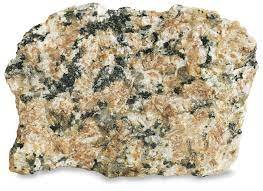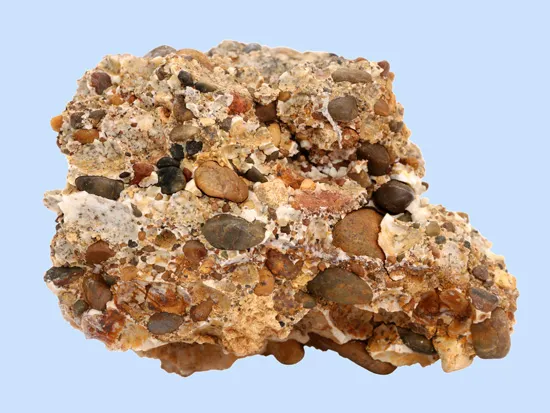On this page, we will briefly explain how igneous rock and sedimentary rock can be changed into metamorphic rock. The Earth’s crust is a constantly evolving landscape, as geological processes work to create and modify different types of rocks. One of these processes is the formation of metamorphic rocks, which involves the transformation of igneous and sedimentary rocks under specific conditions. This article will explore the various ways in which igneous and sedimentary rocks can be altered into metamorphic rocks, as well as the factors that influence this transformation.
Explaining How Igneous Rock and Sedimentary Rock can be Changed into Metamorphic Rock
- Igneous Rock: Igneous rocks are formed from the solidification of molten rock material called magma. They are classified into two main types, intrusive and extrusive, depending on where they cooled and solidified. Intrusive igneous rocks form when magma cools slowly beneath the Earth’s surface, resulting in a coarse-grained (phaneritic) texture. Examples of intrusive igneous rocks include granite and diorite. Extrusive igneous rocks form when magma reaches the Earth’s surface and cools rapidly, producing a fine-grained (aphanitic) or glassy texture. Examples of extrusive igneous rocks include basalt, obsidian, and pumice.

- Sedimentary Rock: Sedimentary rocks are formed from the accumulation, compaction, and cementation of sediments derived from other rocks, mineral grains, or organic material. They are classified into three main types: clastic, chemical, and organic. Clastic sedimentary rocks are composed of fragments of pre-existing rocks and minerals, such as sandstone and shale. Chemical sedimentary rocks form from the precipitation of minerals from water, like gypsum and halite. Organic sedimentary rocks are composed primarily of the remains of plants and animals, such as limestone and coal. Sedimentary rocks often display layering or stratification and may contain fossils, providing valuable information about Earth’s history.

Comparison
| Category | Igneous Rock | Sedimentary Rock |
|---|---|---|
| Formation | Solidification of molten rock (magma) | Accumulation and compaction of sediments |
| Texture | Crystalline or glassy | Clastic, chemical, or organic |
| Grain Size | Fine-grained (aphanitic) to coarse-grained (phaneritic) | Fine to coarse, depending on the size of the sediments |
| Examples | Basalt, granite, obsidian, pumice | Sandstone, limestone, shale, conglomerate |
| Color | Varies greatly, depending on composition | Varies greatly, depending on composition and sediment type |
| Intrusive vs. Extrusive | Intrusive: Cooled slowly beneath Earth’s surface; Extrusive: Cooled rapidly at Earth’s surface | N/A |
| Fossils | Rare, usually only in volcaniclastic rocks | Common, especially in biogenic sedimentary rocks |
| Layering | Generally not layered, except in volcaniclastic rocks | Typically layered or stratified |
| Locations | Volcanic regions, mid-ocean ridges, deep in Earth’s crust | Riverbanks, ocean floors, deserts, and other depositional environments |
| Economic Importance | Building materials, minerals, gemstones | Building materials, fossil fuels, groundwater reservoirs |
This table highlights the key differences between igneous and sedimentary rocks, including their formation processes, textures, grain sizes, examples, colors, and other characteristics.
Video: Rock Cycle – Formation of Igneous, Metamorphic, Sedimentary Rocks
How Igneous and Sedimentary Rocks can be Changed into Metamorphic
The Process of Metamorphism
Metamorphism is the process by which a rock’s mineral composition, texture, and/or chemical composition change due to heat, pressure, or chemically active fluids. This process can occur over a wide range of temperatures and pressures, depending on the specific conditions of the Earth’s crust. There are two main types of metamorphism: contact metamorphism and regional metamorphism.
Contact Metamorphism
Contact metamorphism occurs when a rock is heated by direct contact with a heat source, such as a magma intrusion. The high temperatures cause the minerals within the rock to recrystallize or recombine, forming new minerals that are stable under the new conditions. This process primarily affects igneous rocks, as they are often formed through the cooling of magma. Examples of contact metamorphic rocks include hornfels and marble.
Regional Metamorphism
Regional metamorphism is a large-scale process that affects rocks over a vast area, typically in association with tectonic activity such as the collision of continental plates or the subduction of oceanic plates. This process subjects rocks to both high temperatures and pressures, causing the minerals within them to recrystallize and recombine. Both igneous and sedimentary rocks can be transformed into metamorphic rocks through regional metamorphism. Examples of regional metamorphic rocks include gneiss and schist.
Factors Influencing the Metamorphic Process
Several factors contribute to the transformation of igneous and sedimentary rocks into metamorphic rocks. These factors include temperature, pressure, and the presence of chemically active fluids.
Temperature
Heat is a critical factor in the metamorphic process, as it allows minerals to become more mobile and to recrystallize into new, stable forms. The source of heat can be from the Earth’s interior, magmatic intrusions, or even friction generated by tectonic activity. The specific temperature at which metamorphism occurs depends on the minerals present in the original rock and the pressure under which it is subjected.
Pressure
Pressure plays a vital role in the metamorphic process by forcing minerals to reorganize their atomic structures, resulting in new minerals that are stable under the increased pressure. This pressure can be lithostatic, caused by the weight of overlying rock, or directed, resulting from tectonic forces. The specific pressure required for metamorphism varies depending on the rock type and the temperature at which it is subjected.
Chemically Active Fluids
The presence of chemically active fluids, such as water or carbon dioxide, can significantly affect the metamorphic process. These fluids can facilitate the transport of elements and promote the formation of new minerals. Additionally, fluids can lower the melting point of minerals, allowing them to recrystallize at lower temperatures.
Conclusion
The transformation of igneous and sedimentary rocks into metamorphic rocks is a fascinating process that occurs under specific conditions of heat, pressure, and the presence of chemically active fluids. Through contact and regional metamorphism, these rocks undergo significant changes in their mineral composition, texture, and chemical makeup. Understanding the factors that influence this process helps us gain a deeper appreciation for the dynamic nature of the Earth’s crust and the incredible variety of rocks it produces.
Understanding the process of metamorphism also has practical applications in various fields, such as the extraction of valuable minerals and the study of past tectonic events. For example, metamorphic rocks like schist and gneiss often contain valuable minerals, such as garnet or graphite, that can be economically extracted for use in various industries.





